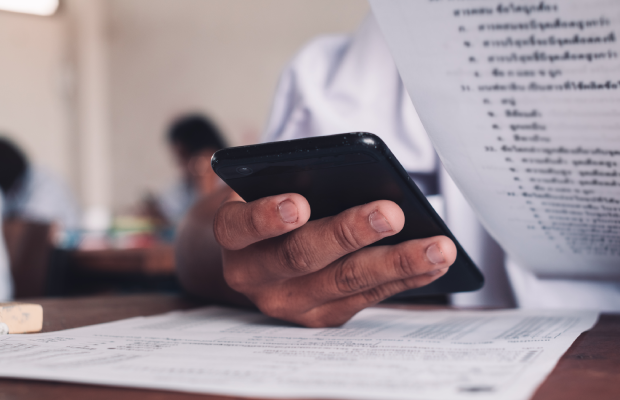Biology- HEART & BLOOD
Hi I am studying for my biology exam tomorrow
I've got a question about the heart.
De-oxygenated blood travels to the lungs through the pulmonary artery. Then, the oxygenated blood travels back to the heart through the pulmonary vein.
I understand how the de-oxygenated blood turns into oxygenated blood however how does the oxygenated blood turn back into deoxygenated blood
Please help
I've got a question about the heart.
De-oxygenated blood travels to the lungs through the pulmonary artery. Then, the oxygenated blood travels back to the heart through the pulmonary vein.
I understand how the de-oxygenated blood turns into oxygenated blood however how does the oxygenated blood turn back into deoxygenated blood
Please help
This thread should be in the biology/sciences forum. A moderator should move this thread into the correct forum where hopefully you can find the correct answer  @Lemur14
@Lemur14
 @Lemur14
@Lemur14When the blood returns to the heart through the pulmonary vein, it is then pumped out by the left ventricle to the body through the aorta. The blood goes through arteries and capillaries to individual cells. The cells use of up and take the oxygen away from the red blood cells.
A little more detail: when the blood becomes oxygenated in the lungs, the haemoglobin in the red blood cells binds to the oxygen making oxyhaemoglobin. When the blood goes to cells be oxygen is released and the oxyhaemlglobin becomes haemoglobin again.
A little more detail: when the blood becomes oxygenated in the lungs, the haemoglobin in the red blood cells binds to the oxygen making oxyhaemoglobin. When the blood goes to cells be oxygen is released and the oxyhaemlglobin becomes haemoglobin again.
Original post by Y11_Maths
This thread should be in the biology/sciences forum. A moderator should move this thread into the correct forum where hopefully you can find the correct answer  @Lemur14
@Lemur14
 @Lemur14
@Lemur14Thanks for the tag, it looks like it's been moved there

Original post by Lemur14
Thanks for the tag, it looks like it's been moved there 

Happy to help
I don't know how much detail you need, but basically haemoglobin's (in the red blood cells) affinity for oxygen (how much they want to hold onto oxygen) changes depending on the environment they're in. If there's lots of oxygen about (e.g. when the blood runs next to the lungs), it has a high affinity and so takes on oxygen (so the blood becomes oxygenated). When there's not very much oxygen (e.g. at a respiring muscle), is has a low affinity, which means it drops its oxygen so that the muscle can use it (thus the blood becomes deoxygenated).
Quick Reply
Related discussions
- HNC science
- Muslim - Am i allowed to have physical contact with the in this circumstance
- Christmas is RUINED News Compilation thread Mk II
- Electrcity Help
- OCR A physics question
- Has anyone met someone from TSR in person?
- Biology a levels help !!
- Can Muslims practice criminal law
- Jack Grealish loves alcohol and women
- Car thefts Birmingham
- Electro acoustic guitar 🎸
- Sainsbury's and some Tesco deliveries cancelled over technical issues
- Units help
- A Level Physics OCR A Paper 2 unofficial mark scheme
- Multisum circuit
- Teenager given 2 year youth sentence for killing an 82 year old man.
- King Charles to appear in public at Easter Sunday church service
- Incorrect unit conversion
- Anaesthetist who stole drugs from NHS hospital for sex use jailed
- Trying to fill a Tesla with petrol!
Latest
Trending
Last reply 21 hours ago
A-level Biology Study Group 2023-2024Last reply 4 days ago
GCSE Biology Study Group 2023-2024Last reply 1 week ago
Need detailed and specific OCR Biology notes before alevel exam.Last reply 1 week ago
SNAB biology- Access to end-of-topic tests/summaries 2024Last reply 1 week ago
a level biology mitosis questionLast reply 3 weeks ago
Biology surface area to volume rationLast reply 3 weeks ago
aqa biology aslevel calculation question FVCPosted 1 month ago
SNAB biology 2024 scientific articleLast reply 1 month ago
Resources for edexcel a (snab) a level biology?Last reply 1 month ago
Im losing my mind over this and I don't know where I keep going wrongLast reply 1 month ago
Aqa biology a level paper 3 2023Last reply 2 months ago
AQA A Level Biology Paper 1 2018Last reply 3 months ago
how do you do this please explain stepsLast reply 5 months ago
biology math question ratios alevel aqaLast reply 6 months ago
biology aqa alevel proteins question past paperTrending
Last reply 21 hours ago
A-level Biology Study Group 2023-2024Last reply 4 days ago
GCSE Biology Study Group 2023-2024Last reply 1 week ago
Need detailed and specific OCR Biology notes before alevel exam.Last reply 1 week ago
SNAB biology- Access to end-of-topic tests/summaries 2024Last reply 1 week ago
a level biology mitosis questionLast reply 3 weeks ago
Biology surface area to volume rationLast reply 3 weeks ago
aqa biology aslevel calculation question FVCPosted 1 month ago
SNAB biology 2024 scientific articleLast reply 1 month ago
Resources for edexcel a (snab) a level biology?Last reply 1 month ago
Im losing my mind over this and I don't know where I keep going wrongLast reply 1 month ago
Aqa biology a level paper 3 2023Last reply 2 months ago
AQA A Level Biology Paper 1 2018Last reply 3 months ago
how do you do this please explain stepsLast reply 5 months ago
biology math question ratios alevel aqaLast reply 6 months ago
biology aqa alevel proteins question past paper



